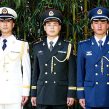
Special Issue on 2015 Defense White Paper on Military Strategy
Publication: China Brief Volume: 15 Issue: 12
By:

As Editors, we have the distinct pleasure of introducing a special issue of China Brief, focused on the Chinese government’s 2015 Defense White Paper (DWP) and its theme of military strategy. This year’s report, the latest roughly biannual installment since 1995, contains the broad guidelines for the People’s Liberation Army’s (PLA) development but appears to have little in the way of “new” policy. The DWP seems to be intended mainly for a foreign audience, and thus is not considered as authoritative as the 2013 Science of Military Strategy. Yet, it is a useful benchmark for PLA thinking on major issues and one of the PLA’s main cases for the military transparency foreign nations so often call for. To assess the implications of the DWP, China Brief has brought together leading experts on the Chinese military and foreign policy to contribute their analysis of the 2015 DWF, released May 26 by the State Council.
Acknowledging the dangers of highlighting inclusions of single words or concepts and cutting through the repetition and stale language, Dennis Blasko provides an excellent overview of the DWP. Blasko puts previous editions in context and keys in on the impact of the PLA’s ongoing shift to a maritime and aerospace power. Though China has long aspired to become a strong naval and air power, this year’s edition of the DWP is even more explicit about China’s intensions than before, stating that “The traditional mentality that land outweighs sea must be abandoned, and great importance has to be attached to…protecting maritime rights and interests.” This emphasis on maritime and territorial issues forms the main theme of the paper, and points to the challenge of shifting gears from a overwhelmingly land-based force to one capable of long distance, offshore power protection.
The inclusion of the “holistic security concept” (zongti anquan guan), first unveiled by President Xi in 2014, is the focus of Timothy Heath’s article. Coming now three years into Xi’s rule, this DWP incorporates more fully the policies and goals of the Xi administration, specifically detailing the “two centenary goals” and for the first time including them as a fifth mission under previous president Hu Jintao’s “historic missions.” This echoes Xi’s goal to make the military support China’s overall national development, and reflects Xi’s merging of domestic and international security issues under the “holistic security concept” and new linkage of development as security. Another important shift is the elevation of “safeguarding rights” to the same status as “safeguarding stability,” which Heath asserts has the potential to securitize any challenge to China’s development goals and thus may lead Chinese leaders to favor increasingly coercive measures to accomplish their strategic goals. This perceived pressure means that although Beijing still does not desire conflict or war with the United States or its neighbors, China may resort to creating or exploiting military crises to further its goals—and this brinkmanship will be direct challenge to the stability of the Asia Pacific region.
Turning to network warfare, Joe McReynolds finds that the 2015 DWP remains largely consistent with, and indeed often directly repeats, previous sections from the 2011 and 2013 versions. The PLA’s focus on developing the human capital side of its cyber capabilities, and its view of cyberspace as an important part of China’s economic and social development, including for social stability, is reflected in the DWP’s discussion of the cyber domain. The continued growth of cyberspace in China’s quest for information dominance to “win wars under informatized conditions” also follows larger trends in the PLA. Of note, the document furthers Beijing’s public discussion of its cyber forces, which McReynolds believes should provide the U.S. government more opportunities to address cyber issues in bilateral meetings. This can be accomplished through clarifying the role of “active defense” in China’s cyber strategy, the definition and translation of the “wangluo” concept (as “cyber” vs. “network”) and acknowledging the possible creation of a PLA cyber command. Yet McReynolds warns against analysts prescribing too much authority to this document on sensitive issues like network warfare.
In our final article, Senior Fellow Willy Lam argues that the DWP confirms the shift to the Xi Jinping era of CCP-PLA relations, which has been marked by greater integration of civilian and military elements and a more powerful influence on the PLA on everyday life. As argued by Dr. Lam in his new book, Chinese Politics in the Xi Jinping Era, Xi’s policies are more directly a continuation of Deng Xiaoping’s guidelines rather than those of Jiang Zemin or Hu Jintao. Concepts like quanminjiebing (all civilians should become soldiers in times of crisis) have been revived and given a special place in speeches than they were under Jiang and Hu. In the DWP, civil-military integration (CMI) receives a special section of its own, encouraging joint development of military and civilian infrastructure–a phrase commonly found in China’s discussions of infrastructure in the South China Sea. Lam also notes that China’s Reserve units have expanded, and that Xi’s promotion of the units and civilian involvement in disaster and war preparations echoes Mao’s People’s Warfare ethos. Under Xi, civilian business leaders in defense industries have also gained in political power, with the heads of several key parts of China’s military-industrial complex becoming political leaders of Chinese provinces and elsewhere in government. Lastly, Dr. Lam notes that the militarization of Chinese security policy and its impact on the civilian sector is having the worrying effect of militarizing civilian life, helping push China towards an aggressive foreign policy.





